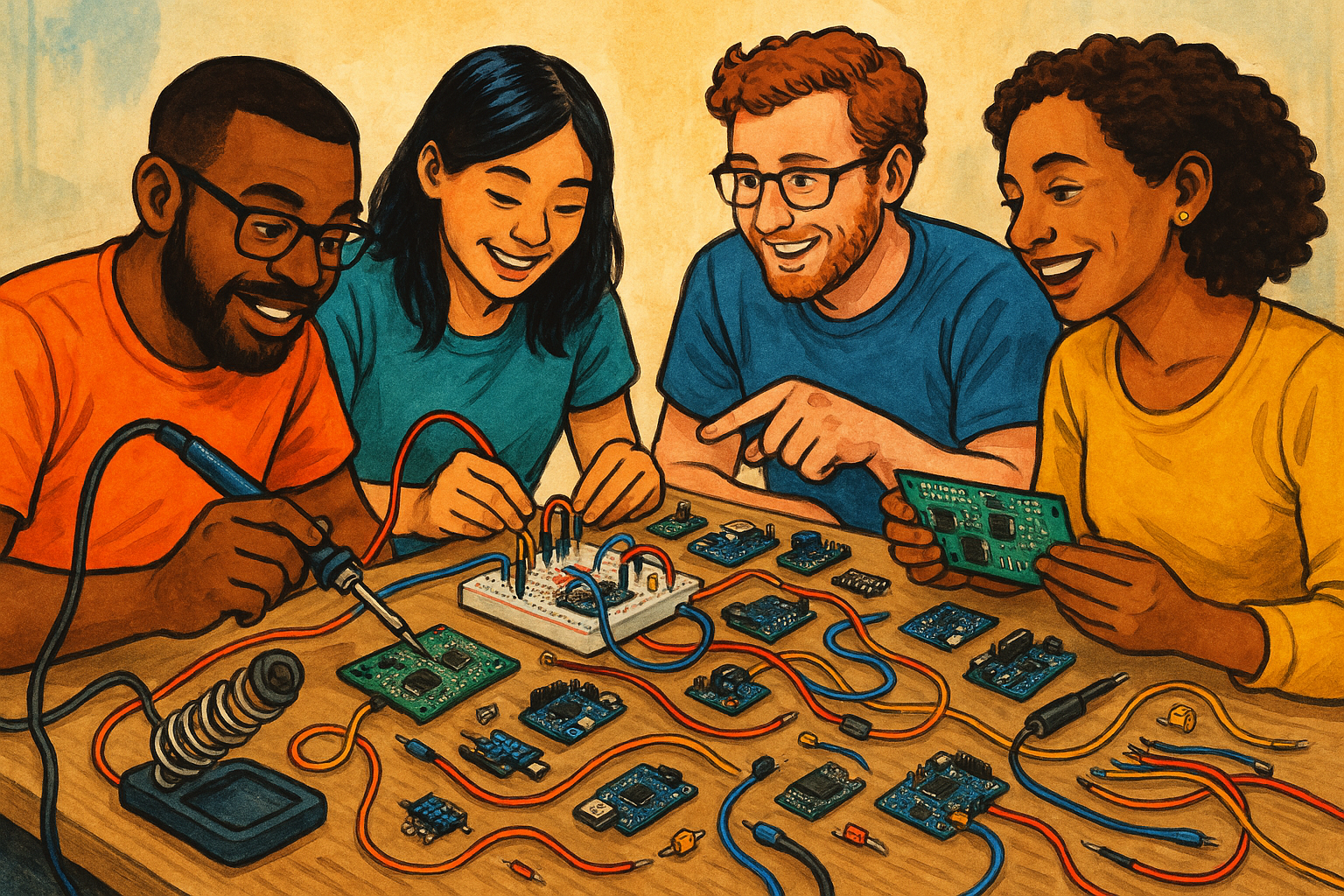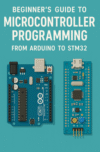When you picture an embedded developer at work, the first image that probably comes to mind is someone hunched over a desk, oscilloscope glowing, firmware running through an endless debug cycle. It feels like the kind of job made for loners who like to tinker in silence. But here’s the truth that rarely gets said out loud: the best embedded systems aren’t built in isolation. They’re the product of collaboration, of developers learning how to lean on each other’s strengths.
The quote “iron sharpens iron” is as relevant as ever.
Anyone who’s wrestled with microcontrollers long enough knows how wide the skill set really is. One week you’re fine-tuning interrupt routines on an STM32, the next you’re figuring out why an I²C sensor refuses to acknowledge your bus, and the week after that you’re digging into real-time operating system (RTOS) task scheduling. No single engineer is a master of it all. Some people have a gift for low-level C bit-banging, others thrive at hardware bring-up, and some see the big picture of system integration. The magic happens when those people stop working in silos and actually start cross-pollinating ideas.
Think about debugging. Anyone who has spent an entire day chasing what looked like a firmware bug, only to find a pull-up resistor missing, knows the pain. When you’ve got hardware and software people in the same room, those rabbit holes shrink dramatically. A hardware engineer can glance at the schematic and say, “You’re never going to get a clean edge there without a stronger pull-up.” Suddenly the firmware developer isn’t chasing ghosts anymore.
Then there’s the world of code reviews. A lot of embedded engineers used to shrug off the idea, thinking “That’s for web developers.” But when you’re maintaining drivers that will live on a product for ten years, having another set of eyes on your code is priceless. A teammate might spot that you’re relying on undefined behavior in the C standard, or that your memory allocation scheme isn’t deterministic enough for a safety-critical application. Catching that in review saves months of headaches later.
The benefits go beyond pure technical fixes. Collaboration builds a culture of shared ownership. When you’re the only person who knows how a certain SPI driver works, you’ve created a single point of failure. But when you document it, discuss design decisions openly, and teach others on the team, suddenly you’ve made the system more resilient. Knowledge hoarding is a dead end in embedded work; knowledge sharing makes a team unstoppable.
Don’t be afraid to share your expertise; even if you don’t feel like you have something to share, chances are that sharing won’t hurt and may even lead to new discoveries that would have never been made.
Even the new generation of tools reflects this reality. Platforms like GitHub, GitLab, and even Slack integrations aren’t just conveniences; they’re the new lifeline of embedded collaboration. Sharing build logs, test results, and hardware validation data across continents is now normal. Teams designing IoT products in different time zones are learning to treat “async collaboration” as a core skill, almost as important as knowing how to set up an RTOS timer.
And perhaps the most overlooked benefit of working together is creativity. Embedded development often feels like a series of constraints—limited flash, limited RAM, limited power. When you’re stuck inside that box, having another mind in the room can flip the problem upside down. One developer might say, “We can’t afford that FFT on this chip,” and another counters, “What if we just do a decimation step first?” Suddenly the impossible is possible, not because someone was smarter alone, but because two perspectives collided.
The lone engineer image has its charm, but the future of embedded systems belongs to teams that collaborate. Whether it’s building safer medical devices, more efficient robots, or smarter IoT gadgets, the products that change the world won’t come from isolated silos. They’ll come from engineers who know that working together is just as critical a skill as writing interrupt-safe code.
So next time you’re knee-deep in a debugging session, maybe ask a teammate to pull up a chair. Chances are, they’ll spot something you don’t. And in embedded systems, that’s the difference between a product that limps along and one that thrives for a decade in the field.



